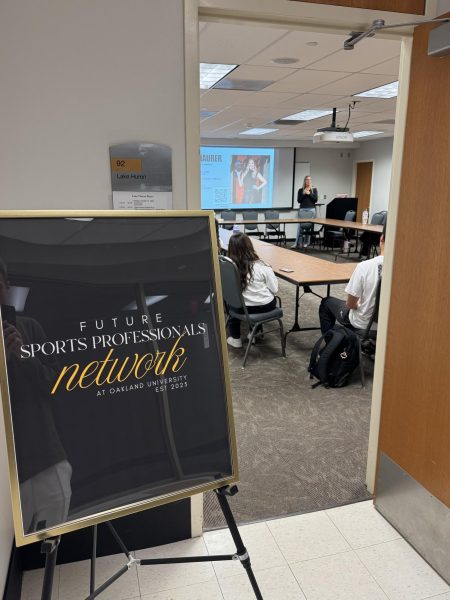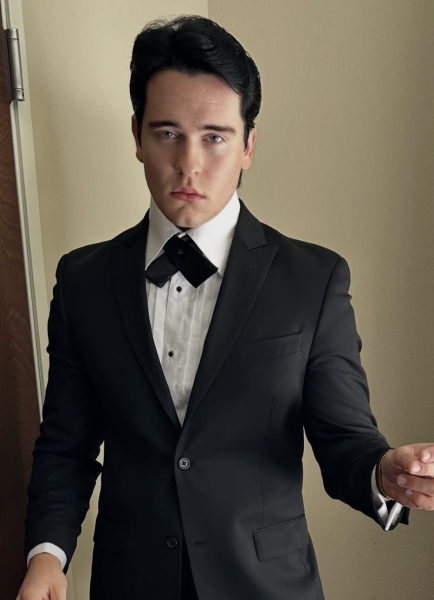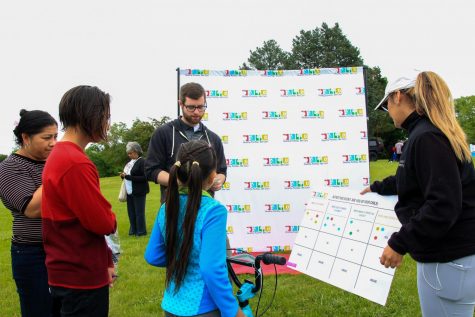Professor discovers apes can categorize species through testing
Jennifer Vonk, associate professor of psychology at Oakland University, discovered that apes can recognize similarities in species.
Her discoveries were published Sept. 10 in the edition of the journal “PeerJ.”
Her studies began when she worked with Suzanne Macdonald, who had a behaviorist position at Toronto Zoo. She gave them the freedom to choose the species of their choice.
Vonk chose to focus on orangutans.
“I’ve collected photos of them since I was six years old, so it was really exciting to get to work with them,” Vonk said.
Using dried fruit and yogurt-coated raisins as fuel to their fire, Vonk began running several tests on orangutans and gorillas.
“At the time I was really interested in whether or not they could think in abstract even though they don’t have a language,” Vonk said.
The tests were run on a touch computer screen. Vonk wanted to discover if they were capable of forming concepts. Did the orangutans basing their conclusions on physical appearance, or did they understand the complexities behind the species?
“An animal, lives, breathes and reproduces,” Vonk said. “We wanted to see if they could realize its more than physical appearance.”
The procedures
Vonk’s first study, where she worked closely with six orangutans, took two years to officially complete.
The test ran was a two-choice procedure. The screen was filled with two pictures, one side would be a human and the other an orangutan. They were asked to pick which was an orangutan.
They were also given a sample and chose which of their two on the screen matched the relationship of the shape and color of their sample.
The orangutans were more than 70 percent correct.
“Having worked with gorillas, orangs, chimps and some other monkeys to me the orangutans were the most thoughtful and calm of the apes,” Vonk said.
Age of the apes
Vonk noticed a generational difference in the eagerness of the orangutans to perform. The two older orangutans in their 40s took longer to train, but for different reasons.
If they were not automatically interested in touching the computer screens, peanut butter was smeared on the screen to motivate them.
Vonk described the oldest male, Ding-ding, as laid back.
“Ding-ding, my personal favorite in the group, was basically the only one we had to use the peanut butter for,” Vonk said.
However, Vonk described Abby, the oldest female, as smart and stubborn. Vonk recalled that Abby scraped one side the screen for 18 months and suddenly began making choices and was 90 percent correct.
“It’s almost like she knew all along what she was supposed to do but she didn’t cooperate until she was ready,” Vonk said.
The younger orangutans would get very anxious and excited when waiting for their turn.
“They’d get so excited they’d projectile vomit or poke me with sticks while waiting their turn,” Vonk said. “Molek, the other male, would do summersaults and then sit right in front of it with his finger out and ready to go.”
Vonk said their reactions to testing really helped them to understand the individual orangutans’ personality.
“Orangutans normally won’t look you in the eye, Abby had no problem looking you in the eye and sizing you up,” Vonk said.
Vonk said when working with wild animals it is important to never make the mistake of giving them too much trust. It is important to always remember they are fully capable of causing you harm if they choose to.
Vonk is currently working with the Detroit Zoo and teaching research methods to graduate and undergraduate students at Oakland University.









